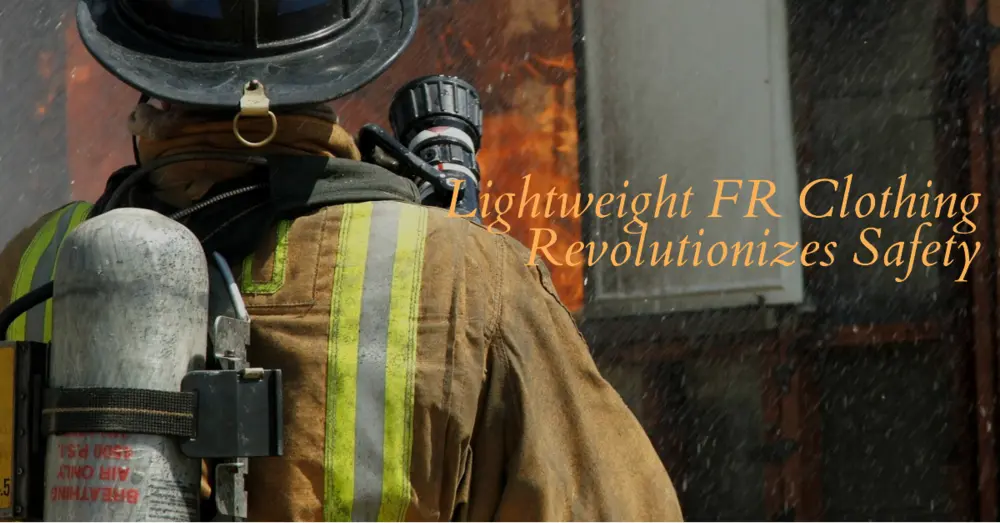For many professions and activities, fire safety is paramount. From firefighters and welders to industrial workers and even campers, the need for protective clothing that can withstand flames and heat is crucial. However, traditional fire-resistant (FR) clothing often comes with a hefty weight and bulky design, sacrificing comfort and mobility for safety.
This is where the concept of lightweight fire retardant clothing steps in, revolutionizing the way we approach fire safety. This post will delve into the world of lightweight FR clothing, exploring its benefits, applications, and how it’s changing the game for various industries.
Top Concerns Addressed (Common User Queries):
- Is lightweight FR clothing really safe?
- What are the different types of lightweight FR clothing?
- What are the benefits of wearing lightweight FR clothing?
- Who needs lightweight FR clothing?
- How does lightweight FR clothing compare to traditional FR clothing?
Lightweight Fire Retardant Clothing: Redefining Safety
Lightweight FR clothing utilizes innovative fabrics and treatments to provide superior flame resistance while maintaining a comfortable weight and a more relaxed fit. Unlike traditional FR garments that can feel stiff and bulky, lightweight FR clothing offers greater flexibility and breathability, allowing for a wider range of movement and improved wearer comfort.
Here’s a breakdown of how lightweight FR clothing achieves its remarkable balance:
- Advanced Fabrics: Modern FR fabrics are often made from synthetic fibers like Nomex® or Kevlar® that are inherently flame-resistant. These fibers are lightweight and breathable, offering excellent protection without adding unnecessary bulk.
- Chemical Treatments: Certain chemical treatments can be applied to fabrics to enhance their fire resistance. These treatments bond to the fibers at a molecular level, creating a flame retardant barrier without significantly impacting weight or flexibility.
- Blends and Layering: Lightweight FR clothing can also utilize blends of natural and synthetic fibers, or employ a layering system where a lightweight FR outer layer is combined with a comfortable inner layer.
Benefits of Lightweight FR Clothing: Beyond Protection
The advantages of lightweight FR clothing extend far beyond just offering fire protection. Here are some key benefits that make this innovative technology a game-changer:
- Improved Comfort and Mobility: By eliminating the bulk and stiffness of traditional FR garments, lightweight clothing allows for greater freedom of movement and reduces wearer fatigue. This is especially important for professions that demand high levels of activity, such as firefighters or industrial workers.
- Enhanced Wearability: The relaxed and comfortable fit of lightweight FR clothing makes it more appealing to wear for extended periods. This can lead to increased compliance with safety regulations, as workers are more likely to wear their protective gear consistently.
- Reduced Heat Stress: Lightweight and breathable fabrics help regulate body temperature, reducing heat stress in warm environments. This is crucial for preventing heat exhaustion and improving overall worker well-being.
- Versatility: Lightweight FR clothing can be designed to resemble everyday clothing styles, making it suitable for a wider range of applications. This includes professions where traditional FR gear might appear too industrial, such as utility workers or even some outdoor activities. (Note: While lightweight FR clothing offers some protection, it’s important to consult with safety professionals for activities with high fire risk.)
Applications: Who Needs Lightweight FR Clothing?
The revolutionary nature of lightweight FR clothing makes it suitable for a diverse range of industries and activities:
- Firefighters: Lightweight FR gear allows firefighters greater mobility and agility when battling blazes, improving performance and safety.
- Industrial Workers: Workers in various industries like oil & gas, construction, and manufacturing can benefit from the comfort and flexibility of lightweight FR clothing while maintaining essential protection.
- Linemen and Utility Workers: Lightweight FR garments can be designed for a more professional look while ensuring safety for linemen and other utility workers.
- Racers and Motorsports: Lightweight FR suits are crucial for drivers and pit crew members in motorsports, providing vital protection without compromising movement.
- Campers and Hikers: For those venturing into areas with potential fire hazards, lightweight FR clothing like flame-retardant base layers can offer an extra layer of safety. (Important Note: Always prioritize following established safety protocols when camping or hiking.)
While lightweight FR clothing offers significant benefits, it’s important to remember that no clothing is entirely fireproof. The level of protection offered depends on the specific fabric, treatment, and garment design. Always consult with safety professionals to determine the appropriate level of FR protection needed for your specific activity or industry.
That being said, for tasks where fire resistance isn’t the main priority, relaxed boot cut jeans can be a comfortable and stylish option. They offer a roomier fit through the hips and thighs compared to skinny jeans, with a leg that opens slightly from the knee down. This cut flatters many body types and can be dressed up or down depending on the occasion.
Lightweight FR Clothing vs. Traditional FR Clothing: A Clear Advantage
Traditional FR clothing, while effective in offering fire protection, often comes with drawbacks like:
-
The rise of lightweight FR clothing represents a significant shift in the way we approach safety gear. It’s no longer a choice between protection and comfort; innovative technology allows us to have both. This trend extends beyond just functionality, paving the way for a future where fire safety and style can go hand-in-hand.

